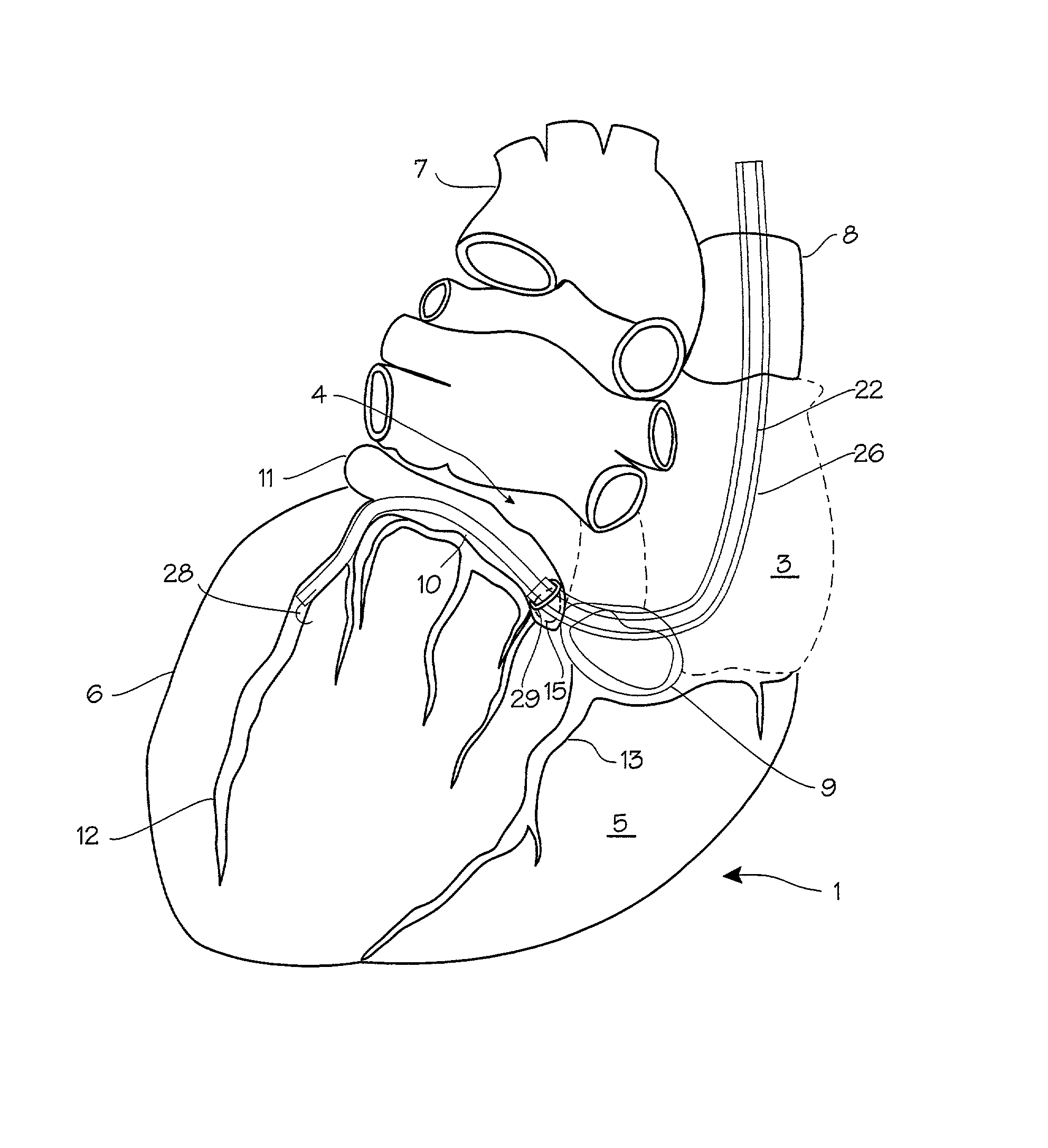Method of treating the heart
a heart and treatment method technology, applied in the field of site specific delivery of therapeutic agents, can solve the problems of poor function, fibrillation and death, and hinder the normal functioning of heart cells or myocytes in an ischemic region,
- Summary
- Abstract
- Description
- Claims
- Application Information
AI Technical Summary
Problems solved by technology
Method used
Image
Examples
Embodiment Construction
[0012] FIG. 1 illustrates the method of treating the human heart. The heart 1 of the patient is illustrated in a posterior view. The heart comprises the four chambers, the right atrium 3, the left atrium 4, the right ventricle 5 (hidden behind the pulmonary veins in this view) and the left ventricle 6. The left ventricle is the chamber that pumps blood out of the heart to the rest of the body through the aorta 7. The right atrium collects venous blood from that superior vena cava 8 and the inferior vena cava 9, and also from the coronary sinus 10. The coronary sinus in turn collects blood from the great cardiac vein 11, the posterior vein of the left ventricle 12, the middle cardiac vein 13, and the anterior cardiac vein 14 (shown in phantom). The coronary sinus is joined to the right atrium through an aperture called the coronary ostium 15. The ostium is covered by a valve which is not shown.
[0013] Catheter based procedures for treating the heart, in which therapeutic agents are in...
PUM
 Login to View More
Login to View More Abstract
Description
Claims
Application Information
 Login to View More
Login to View More - R&D
- Intellectual Property
- Life Sciences
- Materials
- Tech Scout
- Unparalleled Data Quality
- Higher Quality Content
- 60% Fewer Hallucinations
Browse by: Latest US Patents, China's latest patents, Technical Efficacy Thesaurus, Application Domain, Technology Topic, Popular Technical Reports.
© 2025 PatSnap. All rights reserved.Legal|Privacy policy|Modern Slavery Act Transparency Statement|Sitemap|About US| Contact US: help@patsnap.com



